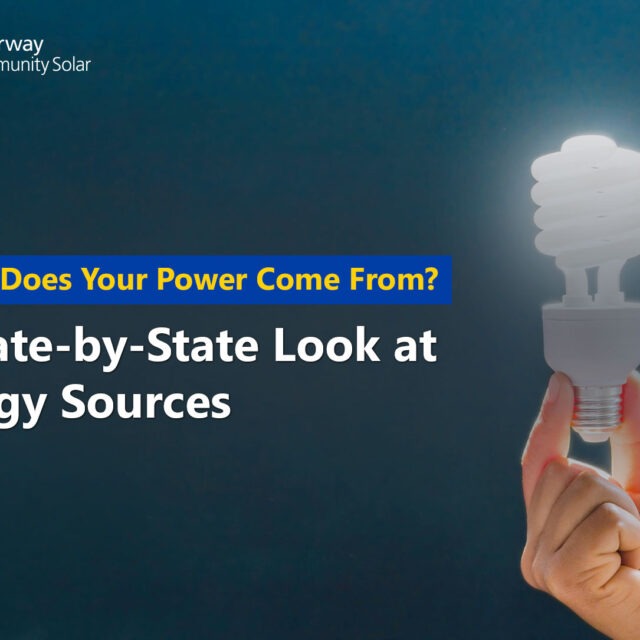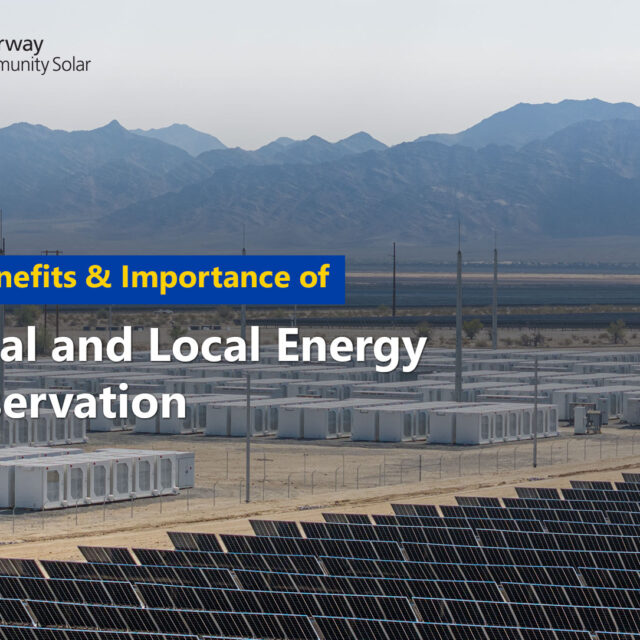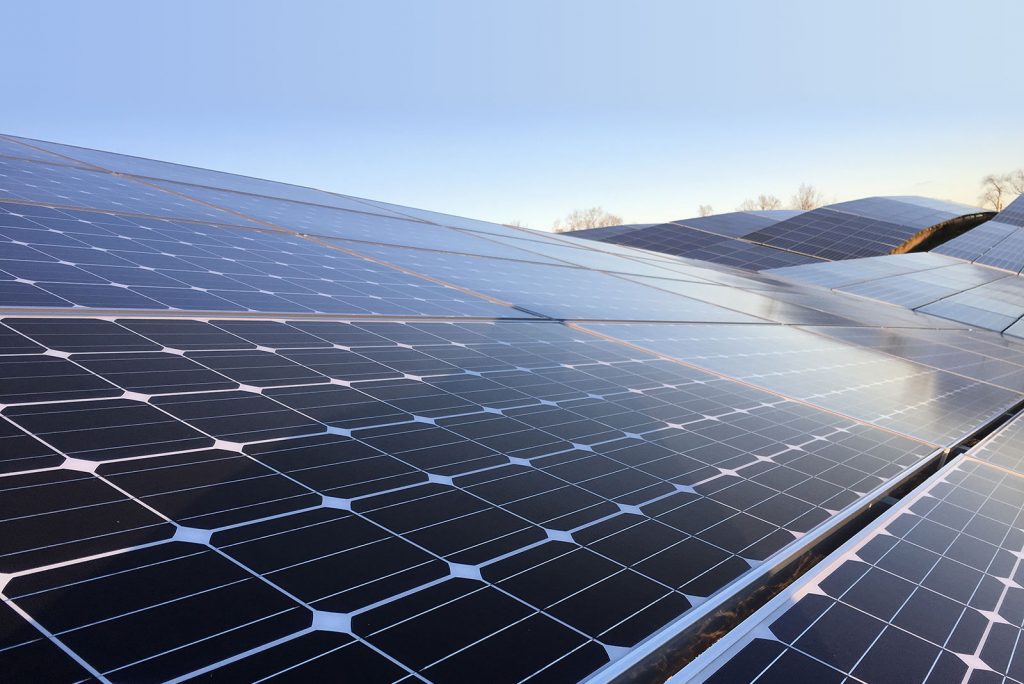
Community solar starts with a simple premise: Solar for all!
In the past, the only way for a consumer to have access to and benefit from solar energy would be if she/he had a roof that faced south, had no trees shading it, and could withstand the weight of solar panels. Today, in the next generation of solar, everyone is able to enjoy the benefits, including individuals and businesses, regardless of whether they can have or even want solar panels or solar shingles on their roofs.
How is that possible?
Community solar, also known as “shared solar”, is an opportunity for people in their community to support solar power from a shared remote source. This approach allows people to support the benefits of solar without having to have systems installed on their homes and businesses. Let’s look at three components of community solar: the solar system, regulations, and customer participation programs.
Off-site Shared Solar Systems
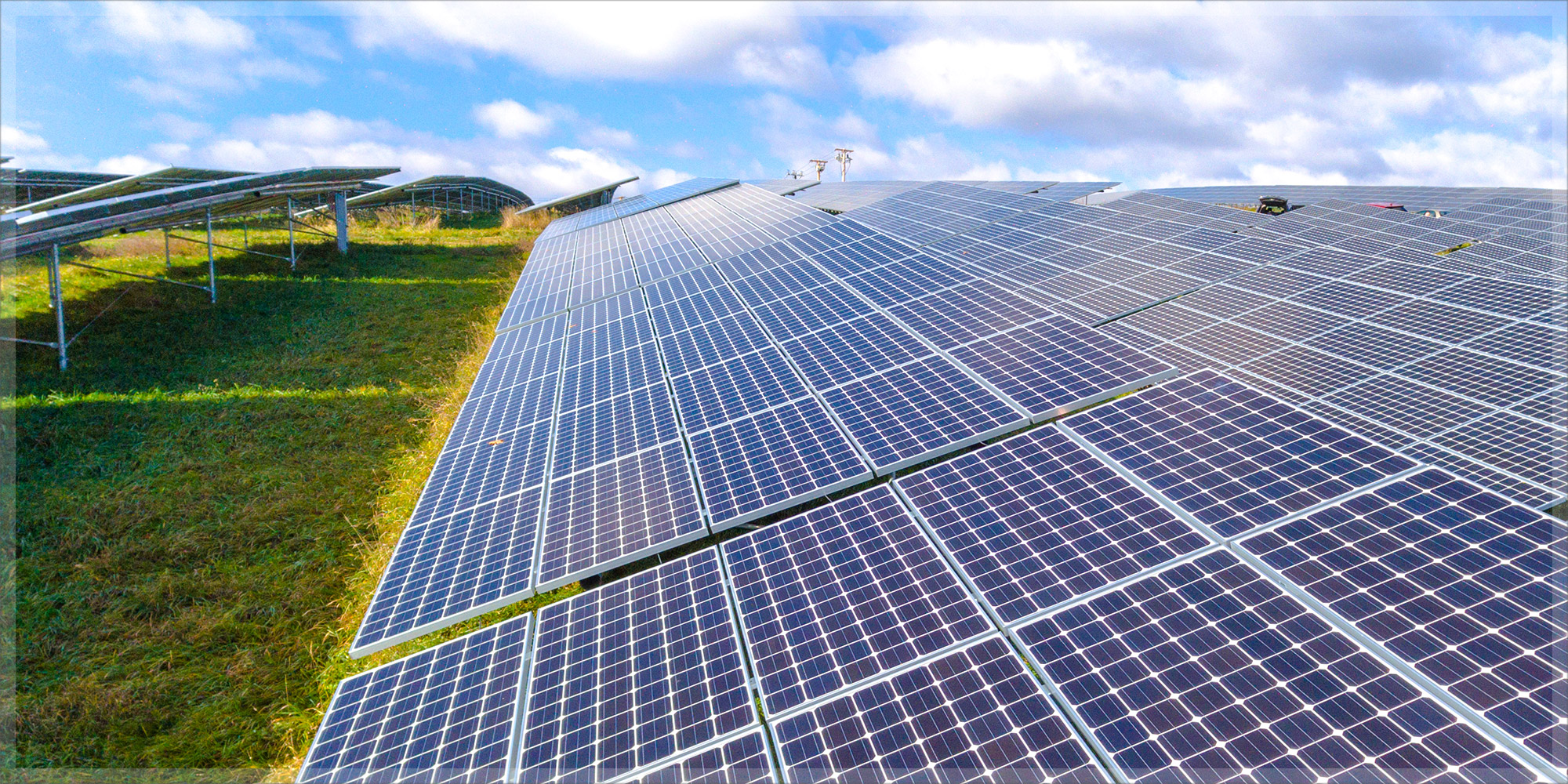 Clearway Community Solar farm in Spencer, MA.
Clearway Community Solar farm in Spencer, MA.
Clearway Community Solar farm in Spencer, MA.
Chances are you have seen a rooftop solar system before, perhaps on your neighbor’s house, at your local school or nearby Whole Foods Market.
Community solar systems, or “farms,” as they are often referred to, are larger versions of rooftop solar systems located off-site from where the energy is consumed by homes and businesses. There are some cases where community solar farms may be installed on a rooftop, but most often, the solar system is installed on land in the surrounding area that is ideally suited to capture the sun’s rays.
Think about it. Now, the solar system is set up in an ideal place and is not the customer’s responsibility to maintain — no more climbing on top of your roof to clean out debris or snow. Customers tend to like community solar because it is hassle free — it’s less intrusive than installing panels on their property.
“I like Community Solar because I can participate in locally sourced solar without having to make a large investment, and my friends who have apartments can participate in solar without having a structure to build it on.”
Melinda H., Community Solar Customer
Solar systems clearly play a critical role in community solar, but in order to fully understand What Is Community Solar¸ it is important to understand the regulatory framework that makes it possible.
Enabled by Virtual Net Metering Regulations
Regulations play an important part in ensuring community solar becomes a part of our future. Effective regulations ensure that the needs of the consumer, utility and solar energy companies are all met. In an earlier blog post, we discussed the momentum in 2017 and 2018 being driven by changes on the regulatory side. One by one, states are coming around to the idea of community solar as an improved renewable solution for the majority of their residents.
The regulations of energy grids, the methods by which energy is delivered from suppliers to consumers, depend on the state. Some state regulations push for more renewable energy, often referred to as “renewable portfolio standards” or “RPS”. Beyond these standards, community solar requires certain additional regulations to exist. In particular, to: 1) allow for the power generated from the solar panels to be accepted by the utility grid, and to 2) translate that generated power into solar credits that Community Solar subscribers could benefit from.
These regulations are known as virtual net metering. So far, more than fifteen states in the U.S. currently have virtual net metering policies in place[1]. Recently, additional states have established working groups to create virtual net metering policies for the future, a positive sign of growth for community solar. For more information, refer to SEIA – Issues & Policies. Net Metering.
How is virtual net metering different from traditional energy metering?
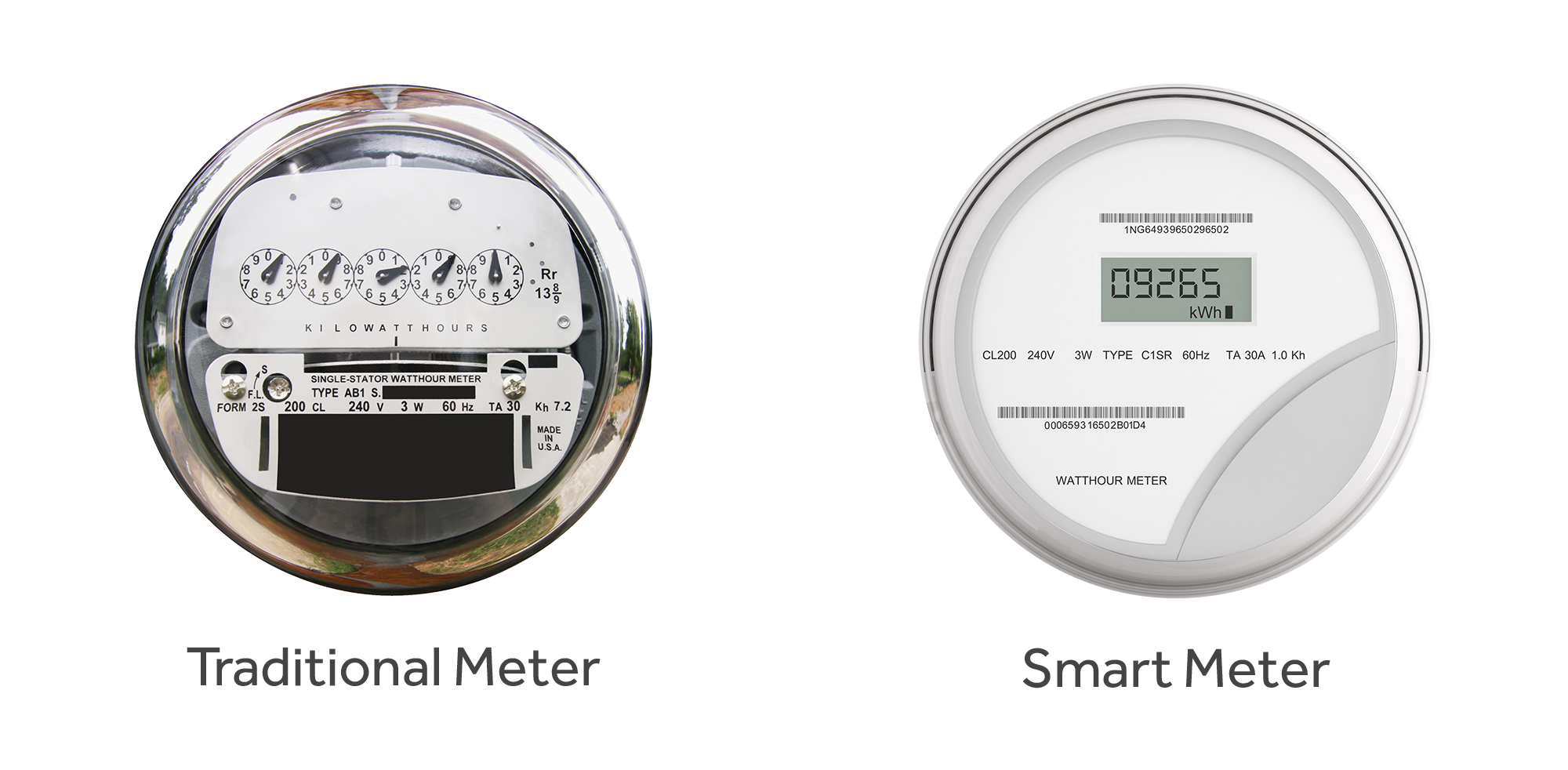
With traditional energy metering, someone from your utility company comes out and reads a kWh energy number on your meter every month, and then the utility sends you a bill based on how much power you have consumed.
In the first generation of solar, rooftop solar is enabled by net metering policies, available in over 40 states[1]. Net metering is sufficient when there is one qualified rooftop solar system for one individual or business. The smart meters measure the power generated from the solar panels on your own roof. Your meter nets out the power generated from the power consumed and reports the net amount on your utility bill.
The second generation of solar solves for the limitations of rooftop solar with the support of virtual net metering policies. Virtual net metering allows multiple individuals and businesses to receive the benefits of a large solar farm. All the benefits available with net metering apply, but the solar panels do not have to reside on your individual home or at your business location. Hence, the net metering occurs “virtually” or remotely from your home or business. Currently, Colorado, Maryland, Massachusetts, Minnesota, New York and California are some states that have enacted regulations that support community solar development.
Without virtual net metering policies, companies will not be able to pass the benefits of the ideally placed off-site solar system to multiple customers. It is important, therefore, to understand which community solar provider can build large-scale off-site solar farms and take advantage of the various state-specific virtual net metering policies to develop a customer participation program for the masses.
Developing Customer Participation Programs
As community solar grows, the key players will differentiate themselves with different customer participation programs. What are all the options available to interested participants? Here, we have summarized three common options. Not all options are available to everyone.
- Premium Rate with the current utility provider: This option is to stay with your utility or power provider but pay a premium rate for a “green” option. This does not necessarily mean you are contributing to solar in your community—you could be getting wind credits from a different part of your state or from outside of your state entirely.
- Partial or Total Ownership: A group of people come together to fund a portion of the solar farm construction. This happens with small projects that typically service up to 100 people. The people who help fund the construction receive some benefits. Generally, these types of projects are not available to the broad public.
- Credit on the Utility Bill with a community solar company. By participating in a plan offered by a community solar company, you can receive credits on your utility bill. These plans are typically long term but are generally designed to offer price certainty and savings over the term.
Because the community solar market is still evolving – and varies from state to state, sometimes utility by utility – there can be a variety of community solar customer participation programs. It is important to understand all the solar energy options available to you and to work with a reputable company that understands the solar business.
Stay tuned for more updates on all things community solar.
[1] National Conference of State Legislature. State Net Metering Policies.
